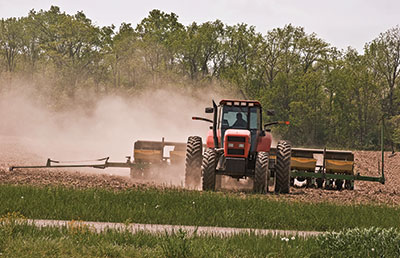Trends in Working Capital

The University of Illinois in their FarmDoc Daily report from yesterday covered some very interesting trends in working capital levels. As we indicated in previous posts, working capital is your total current assets (cash, receivables. inventories and prepaids) less current liabilities (accounts payable, operating loans, accrued liabilities and current portion of long-term debt). The Illinois Farm Business Farm Management Associations helps farmers prepare accrual basis financial statements and their database of farms goes back several years. In the report, they broke down farms by working capital based on their debt/assets ratio in table one for years 2006-2015. This was based on debt/assets ratios of (1) less than .2 (2) .21 to .4 (3) .41-.7 and (4) greater than .71. Start-up farmers are generally in the last two groups while farmers nearing retirement with most of their debt paid off are in group #1.
As expected, working capital peaked out in 2012 for almost all groups. The first three groups all peaked in 2012. The last more highly leveraged group fluctuated greatly (as expected). This grouped peaked in 2011 and then dropped to almost zero in 2012.
Table 2 expanded the listing to show:
- Median debt/asset ratio
- Median working capital
- Working capital per acre
- Working capital divided by gross farm revenue
Since larger farm operations will usually have more working capital, by adding in the last two columns, you can get an idea as to how your operation compares to the median grower in Illinois. Median debt levels trended from about 26% in 2006 down to about 18% in 2012. Since then, the levels have trended up to slightly over 20%. The median amount of working capital started at slightly over $100,000 per farm in 2006 and grew steadily to peak out in 2012 at almost $400,000. Since 2012, working capital has dropped a fair amount to stand at about $230,000 in 2015 (almost a 45% reduction), however, it is still twice as high as at the beginning (of course input costs are much higher now too).
Working capital per acre grew from about $167 to peak out at $540 in 2012. As expected, this number has dropped since then and is now at $305 per acre. Working capital as a percentage of farm revenues ranged between 32% up to 52% in 2012 and has now dropped to about 43%.
All-in-all, Illinois farmers still appear to be in good financial shape, but not as good as the peak years (as expected). Also, Illinois has had record or near record yields since 2012 which likely mitigates negative working capital trends as opposed to other states that may not have had record yields for those same years.
Paul Neiffer is a certified public accountant and business advisor specializing in income taxation, accounting services, and succession planning for farmers and agribusiness processors. Paul is a principal with CliftonLarsonAllen in Walla Walla, Washington, as well as a regular speaker at national conferences and contributor at agweb.com. Raised on a farm in central Washington, he has been immersed in the ag industry his entire life, including the last 30 years professionally. Paul and his wife purchase an 180 acre ranch in 2016 and enjoy keeping it full of animals.

Comments are closed.